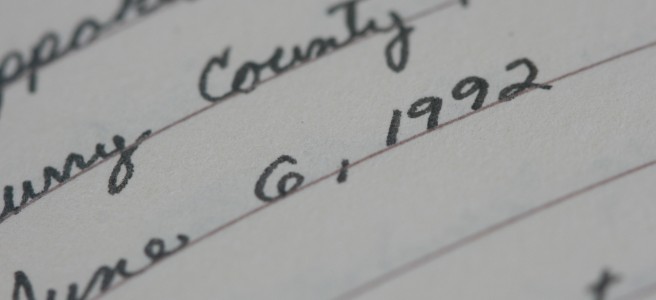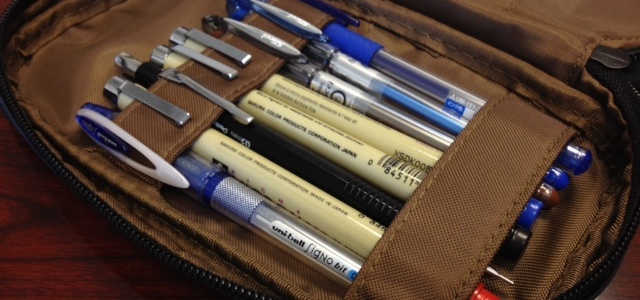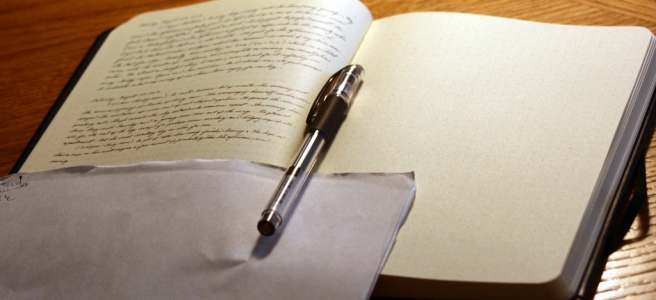When reflecting on the twenty or so years I’ve kept a journal of one form or another, I wonder from time to time as to the catalyst for beginning this endeavor. The origin will probably remain a mystery since the earliest diaries are curiously silent as to the initial impulse behind putting pen to paper. I suppose that somewhere in a forgotten box there may be a ratty old spiral notebook or a few sheets of paper folded and tucked away that could help answer this question.
Reaching back through the mists of time it seems I undertook the endeavor in fits and starts, writing about this trip or that activity or whatever considered important at a given time. These were tentative forays into the journaling world and it can be said with confidence that there was little consideration then that diversionary and occasional scribbling would gain strength and momentum and evolve over the years to the multivolume form in consistent use since 2002ish.
I suppose the fundamental question about keeping a journal is: Why? Why do I write? Why does anyone write? Is it a quest for immortality? An outlet for expression? A tool for evaluation? Why am I asking so many questions? In my case, the catalyst for starting a journal was most likely a combination of the reasons discussed below, with different reasons acting in concert with others at different phases of life. What I wrote in 1992 and why I wrote are assuredly far different from reasons that would develop years later.
Immortality- There is probably some deep human need to produce something that will live on after we’ve shuffled off this mortal coil. Barring the achievement of a great and memorable thing, all but an infinitely small number of us will fade from memory probably within a generation or two if not sooner, leaving no record of having ever been on the earth (yay! how’s that for a cheery weekend thought). A journal has the potential to grant some degree of immortality, provided the volumes aren’t simply thrown out with the rest of the trash by an indifferent family member bitter about having to sort through their weird uncle’s worldly possessions. I’m of decidedly mixed feelings about this. While the thought of producing something that lingers on after I’ve become one with the Force has some innate appeal, I’m not exactly thrilled by the prospect of my journals falling into the hands of others. While I don’t lead a life of scandal (mostly never) and treachery (rarely) , I am nonetheless a very private person, but rather candid with my writing.
Posterity- This is related to immortality (perhaps a subset of it), but I think different enough to warrant independent consideration, as in this context one is writing with their legacy in mind. The risk of writing with one eye focused on the future, in addition to taking a dreaful toll on penmanship, is the danger of self-editing, the likelihood of self-aggrandizement, bias and/or censorship seeping into the text, thereby creating a narrative that may not reflect reality. (‘WOW! Read this! Grandpa was the General commanding the 15th Virginia Infantry Regiment during the assault on the Death Star!”)
Memory- To aid memory is probably the most common reason for keeping a journal, especially for important events and travel.
Reflection- This one is self-evident. Nothing to read here. Move along, move along.
Therapy- We’ve all had things in our lives about which we were not comfortable talking over with others and it is during these situations that a diary or journal can be your best friend and confidant, an important emotional outlet and tool for gaining clarity and insight. There are addiitonal benefits of whining into notebook, namely a journal doesn’t roll its eyes, nor tell you to shut the hell up.
Evaluation- One of my two primary daily journals is used for self-evaluation. In this volume I record data and facts (very little opinion or extraneous commentary) -elements largely quantifiable in nature by which I’m able to evaluate areas of life which may need improvement. Expenses, reading (books read and date range), gym visits, weight, the manner in which free time is spent, specific goals, projects and progress made- the list goes on. Of course all this is very utilitarian but also incredibly useful. It’s nice being able to look back to a day, week, or month as evaluate whether I was productive Model Citizen or a hapless lazy ass (you know: one of those 47% types). And one would also be surprised just how easy it is to record such data once your system is established. To best facilitate this endeavor, I always use a weekly planner.
Expression- I am convinced that keeping a journal is as valid an outlet for creative expression as music or art. Having no talent or ability for either art (which remains at the level of stick figures, really bizarre stick figures) or music (when learning to play the trumpet in high school, practicing outdoors was forbidden due to the risk of being shot by zealous duck hunters), I have come to appreciate journaling as a deeply rewarding outlet for creative expression, especially the art of penmanship.
Other reasons for keeping a diary or journal undoubtedly exist which brings me to my next point: why do YOU keep a journal?
















